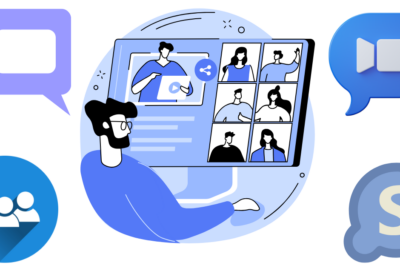What Are the Pros and Cons of AI in Education
In today’s fast-paced digital age, educators are constantly seeking innovative ways to enhance teaching and learning experiences. AI presents a compelling opportunity to revolutionize education, offering personalized learning, instant feedback, and streamlined administrative tasks. In this article, we will explore the pros and cons of AI in education, empowering educators with valuable insights to make informed decisions. From enhancing personalized learning to addressing ethical considerations and overcoming challenges, we’ll cover it all.
Whether you’re a seasoned educator or simply curious about the intersection of technology and education, this article will provide valuable insights and practical guidance. Join us as we navigate the fascinating landscape of AI in education and unlock its transformative potential for learners worldwide.
Introduction to AI in Education
Artificial Intelligence encompasses technologies that enable machines to perform tasks that typically require human intelligence. In education, AI applications range from personalized learning platforms to automated grading systems. Its potential to individualize instruction, provide instant feedback, and streamline administrative tasks has garnered significant attention from educators and policymakers. Let us uncover the pros and cons of AI in education.
Pros of AI in Education
1. Personalized Learning:
AI in education allows for personalized learning experiences tailored to each student’s needs and learning pace. Through the analysis of data collected from various sources such as assessments, interactions, and learning preferences, AI algorithms can recommend specific learning materials, adapt instructional content, and provide individualized feedback to optimize learning outcomes. This personalized approach helps students to engage more deeply with the material, address their unique learning challenges, and ultimately improve their academic performance.
2. Adaptive Learning:
AI-powered adaptive learning systems can dynamically adjust the difficulty level of learning activities based on a student’s performance and progress. By continuously assessing the student’s understanding and mastery of concepts, these systems can provide targeted interventions and scaffold learning experiences accordingly. This adaptability ensures that students are neither overwhelmed by material that is too advanced nor bored by material that is too basic, fostering a more effective and efficient learning process.
3. Enhanced Teaching Assistance:
AI technologies can serve as valuable teaching assistants, supporting educators in various aspects of their roles. Chatbots and virtual tutors equipped with natural language processing capabilities can provide instant help and guidance to students, answering questions, explaining concepts, and offering additional resources. AI can also assist teachers in grading assignments, analyzing student data, and identifying areas for instructional improvement, thereby freeing up time for educators to focus on more personalized and impactful interactions with their students.
4. Data-Driven Insights:
AI enables the collection and analysis of vast amounts of educational data, providing valuable insights into student learning patterns, trends, and areas of improvement. By leveraging data analytics and machine learning algorithms, educators can gain a deeper understanding of student performance, identify potential learning gaps, and make data-informed decisions to optimize instructional strategies. This data-driven approach empowers educators to tailor their teaching methods to better meet the needs of their students and enhance overall learning outcomes.
5. Accessibility and Inclusivity:
AI technologies can help bridge the gap in access to education by providing personalized learning experiences to students with diverse learning needs and abilities. Through features such as text-to-speech, speech recognition, and adaptive interfaces, AI-powered educational tools can accommodate various learning styles, preferences, and disabilities, making learning more accessible and inclusive for all students. Additionally, AI-driven translation tools can facilitate learning for students from diverse linguistic backgrounds, breaking down language barriers and promoting cross-cultural learning opportunities.
6. Lifelong Learning and Skills Development:
AI in education supports lifelong learning initiatives and facilitates continuous skill development beyond traditional classroom settings. Through online learning platforms, intelligent tutoring systems, and interactive educational apps, individuals of all ages can access personalized learning experiences tailored to their interests and career goals. AI-powered adaptive learning technologies can help users acquire new knowledge and skills at their own pace, enabling them to adapt to the evolving demands of the workforce and pursue lifelong learning opportunities for personal and professional growth.
Cons of AI in Education
Privacy Concerns
The widespread use of AI in education raises concerns about data privacy and security. Collecting and analyzing large volumes of student data may compromise confidentiality and expose sensitive information to unauthorized access or misuse.
Dependency on Technology
Overreliance on AI systems may diminish educators’ autonomy and creativity in designing instructional strategies. Moreover, technical glitches or system failures could disrupt teaching and learning processes, highlighting the risks of dependence on technology.
Lack of Human Interaction
AI-driven learning environments may inadvertently diminish interpersonal interactions between educators and students. While AI enhances efficiency and scalability, it cannot replicate the empathy and emotional support inherent in human relationships.
AI Implementation in Education
Implementing AI in education involves several key steps to ensure successful integration and maximize its benefits:
Needs Assessment:
Conduct a thorough assessment of the specific needs and challenges within the educational context. Identify areas where AI technologies can address gaps or improve outcomes, such as personalized learning, student engagement, or administrative efficiency.
Stakeholder Engagement:
Engage with key stakeholders, including educators, administrators, students, and parents, to gather input and address concerns. Collaboration and buy-in from all stakeholders are essential for successful AI implementation in education.
Data Collection and Analysis:
Collect relevant data, such as student performance metrics, learning preferences, and administrative processes. Utilize AI algorithms to analyze this data and derive actionable insights that inform decision-making and instructional strategies.
Technology Selection:
Choose appropriate AI technologies and tools based on the identified needs and goals. This may include adaptive learning platforms, virtual reality simulations, chatbots, or data analytics software. Consider factors such as usability, scalability, and compatibility with existing systems.
Training and Professional Development:
Provide training and professional development opportunities for educators and staff to build their capacity to use AI technologies effectively. This includes familiarizing them with the tools, understanding how to interpret data insights, and integrating AI into teaching practices.
Continuous Evaluation and Improvement:
Continuously evaluate the impact of AI implementation on educational outcomes and adjust strategies as needed. Monitor student progress, gather feedback from stakeholders, and refine AI algorithms and interventions to ensure ongoing improvement and optimization.
Conclusion
In conclusion, the integration of Artificial Intelligence (AI) in education holds tremendous promise for revolutionizing the way we teach and learn. From personalized learning experiences to efficient administrative tasks, AI offers a multitude of benefits. However, educators must approach its implementation thoughtfully, considering ethical, privacy, and fairness concerns.
By balancing the advantages of AI with a critical awareness of its limitations and potential drawbacks, educators can harness its full potential while upholding educational values and principles. Let’s continue exploring AI’s possibilities while upholding the values of our educational systems.




